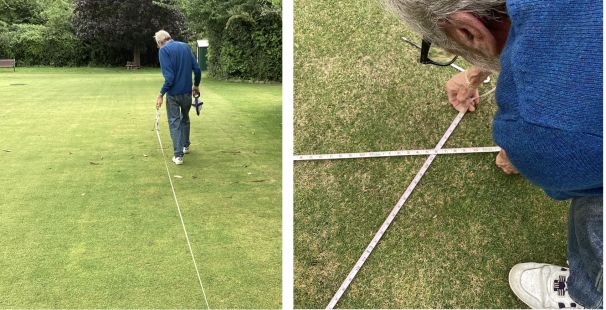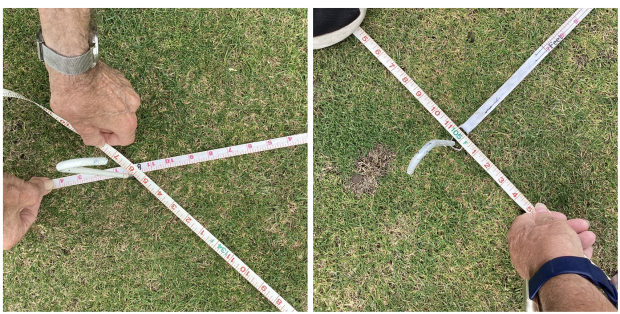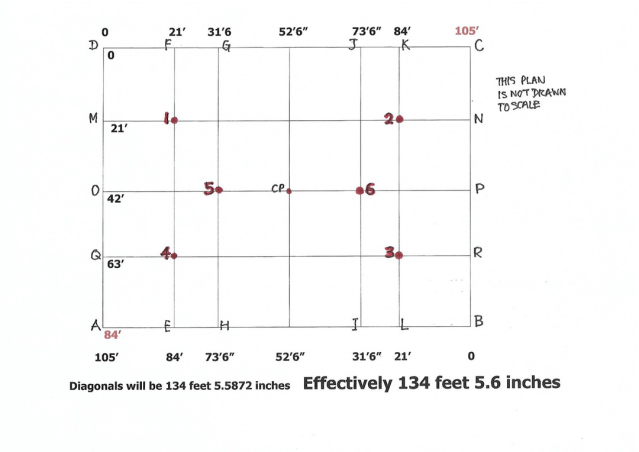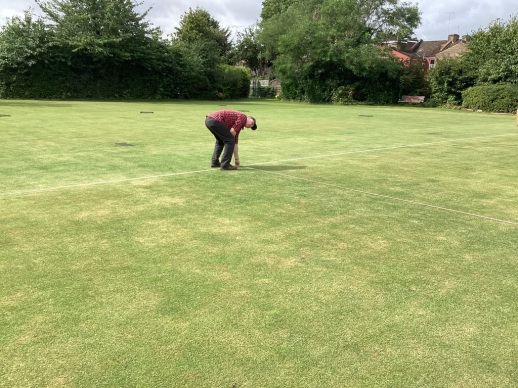Setting A Lawn
1. Prior To Setting Lawns
Lawn surrounds and gardens should be cut back as far as possible from the lawns.
Late Autumn through to March is the best time for heavy duty gardening clearances, tree and shrub lopping, hedge work, lawn levelling. Removal of tree roots. Stop board setting and repairs.
It is against the law to cut hedges or trees during the main bird nesting season which is taken as 1st March to 31st July; unless extensive prior inspection reveals zero nests or nest building.
2. Setting The Initial Lawn Positions
There should be at least one major lawn move every season. This being so it makes no sense to set the opening season positions in the prime spot. Far better to make allowances for a mid-season move which should be both north-south (or vice versa) and east-west (or vice versa) on all the lawns. Better described as NW to SE, SE to NW, SW to NE, or NE to SW, or what might be considered a diagonal move.
Note that there is far more manoeuvrability with lawn 1 than lawns 2 and 3 but all three lawns should be set at the same time. All 3 lawns should all have hoops moved in the same relative direction at the same time to avoid any confusion.
So at start of season set the initial lawn positions to allow for at least one mid-season move. If it is intended that there is to be one move during the season then it should be timed for 1st July or as near as possible.
3. Measuring Out The Lawns
Give that croquet lawns were historically measured in yards we continue to measure the lawns in Imperial Measures. If using two or more different tape measures, ensure that none have been stretched and that they all show the exact same measurements when laid out to full length. When measuring stretch out the tapes with consistency.
Lawn 1 and Lawns 2 and 3 do not have to be set in parallel and given that our lawns area is not rectangular. Lawn 1 always runs East to West whilst 2 and 3 both run North to South. Winter lawn(s) may differ.
The first line to be determined on lawn 1 should be on the south side. Ensure it is not too close to the stop boards to inhibit the swing of a mallet, nor too close to inhibit a turning mower.
The first line is A to B which measures 105 feet. Use markers (the white painted heavy metal tent pegs which are housed in the brown case in our hut) to denote the two end points. Line B to C will measure 84 feet.
An arc marked by pegs if using one tape only, or two stretched tapes will denote corner C once B to C is measured and intersected by A to C. The measure for A to C is 134 feet 5.6 inches. Where the two arcs intersect or where two measures meet exactly denotes the point of C which is then marked by another peg.
Repeat the process for A to D and B to D to find the point for corner D. When completed check the measurement for C to D which should be 105 feet.
String all four outer court lines A-B-C-D and white line.
Repeat the process for lawns 2 and 3 using the East side line nearest the hedge as the commencing line A to B. When setting court 3 remember to extend A to D and B to C across the intended site of lawn 3 to ensure both lawns will fit neatly within the area required.
Ensure there is sufficient off lawn space to swing a mallet and play shots from the line without connecting with the stop boards to the West, North and East of the two adjoining lawns. Also ensure there is sufficient space to turn mowers.
Lawns 2 & 3 do not require to be in perfect parallel to lawn 1. When all three lawns are white-lined we string the lawns to find intersection points for the hoops.
4 Hoop Positions
Measurements should be taken from the two datum lines which are A-B and B-C.
Using in total 18 pegs (some may be reused during the process) measure and mark the points M to N and string tautly fixing to each peg. Also string out O to P and Q to R. Then laying string over these lines tautly string points E to F to G to H to find the exact centre spot for hoops 1, 5 & 4. It is important that the lines remain taut in order that the hoops may be set precisely at 90 degrees to the side lines. When this is completed move the string from E to H up the lawn and restring at points I to L in order to pinpoint the positions for hoops 2, 3 & 6.
The centre peg should be the intersection point of diagonals of A to C and B to D. Far better however to measure the midpoint between hoops 5 & 6 and then string from the centres of 5 & 6. Or find centre point for the centre peg point by eye after measuring the distance midway between the hoops 5 & 6.






